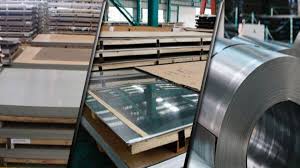Straight chromium stainless steel has reasonable corrosion resistance and high mechanical characteristics. 403 stainless steel provides heat resistance and a calibration temperature of about 1300 ° F. It is a 12 % CR martensite stainless steel for corrosion resistance and heat resistance. This alloy has a wide range of mechanical properties and can be obtained through appropriate heat treatment. It is easily cooled by oil, fan or air, and can ignite it at a temperature of 1350 ° F (732 ° C) to improve the fracture toughness. The thicker part requires oil or fan cooling. The application of 403 stainless steel mainly includes compressor blades and turbine parts.
403 Stainless steel has a high degree of resistance to atmospheric corrosion because it can form a closely attached oxide film, and obtains the maximum corrosion resistance through hardening and polishing. It is not recommended to use in severe corrosive environments. The antioxidant of the stainless steel is as high as 1400 ° F (760 ° C). When continuous use, the temperature should not exceed 1200-1300 ° F (649-704 ° C).
During the heat processing and thermal treatment process, forging or rolling, the recommended forging temperature is between 2000 ° F and 2100 ° F, and the recommended temperature is above 1400 ° F. The final forging temperature is as low as 1300 ° F. If you are careful not to break the steel, you can get better mechanical properties under the condition of forging and recovery at a lower temperature.

The material can be annealing at 1500-1650 ° F, and then slowly cooled to 1100 ° F, and finally it is cold. It can be completely hardened through the oil quenching of 1650-1800 ° F, and the light section may harden up by air or fan cooling. When the temperature above 1500 ° F is cooled, the existing will be hardened to varying degrees
Regarding the ignition, it may be completed at a temperature of 400 ° F -1400 ° F. Due to the reduction of impact characteristics and corrosion resistance, it is recommended to avoid the range of 800 ° F -1100 ° F. At 800 ° F -1100 ° F, the strength and hardness decreased, and the heavier of the fire temperature increased the extension and toughness.
405 stainless steel is a 12%chromium stainless steel, which is designed for welding. Unlike the 12 % chromium stainless steel of other levels, 405 is not vulnerable to the extensive hardening of high -temperature air cooling.
The application of 405 stainless steel mainly includes manufacturing products that cannot be annealing after welding.
The corrosion resistance of 405 stainless steel is the same as that of 410 stainless steel. It is used to be better weldable than the 410 type, cutting processability, and the 405 type can be easily processed, due to its soft and extended characteristics. It can be welded with shielding melting and resistance technology. It is not recommended to use oxyo acetylene. After welding, annealing will maximize ductility.
